An Elegant Tool Called Squidpop That Scientists Want to Crowdsource
The device is so easy to use, researchers are asking for a “squidpop blitz” for World Oceans Day
/https://tf-cmsv2-smithsonianmag-media.s3.amazonaws.com/filer/04/3d/043daae0-affa-402d-9747-8e3c6ef435db/concheyeslmp.jpg)
A sandy bottom, rippled by turquoise water, emerges beneath me as I descend. I’ve been scuba diving in the waters surrounding the Carrie Bow Cay Field Station in Belize for more than 20 years, so I’ve made this dive before. But every dive can have its own surprises. Initially I see nothing but sand, a dusty moonscape seemingly devoid of life.
As I touch bottom, the world around me is obscured from view as the density of the water suspends the tiny particles kicked up by my fins. Soon the visibility clears and I can see this is not a desert at all, but a runway. The strange tracks that crisscross the sand hints at the biodiversity we seek. Something is spending a lot of energy going somewhere. Yet there is no time to pursue the traversing animals, we have a very specific task to accomplish.
The Marine Global Earth Observatory (MarineGEO) dive team works beneath Caribbean waters. Directed by the Smithsonian’s Tennenbaum Marine Observatories Network, this is the first long-term, worldwide research program that will provide unprecedented insights into ecology and biodiversity of our coastal oceans around the world.
MarineGEO is dedicated to studying the biology and ecology of our coastal ecosystems, a critical area of the ocean where marine life is most abundant and the effects of human activity are most pronounced. The observatory was created with the understanding that we need data about coastal marine biology at a large geographic scale and over long periods of time to tackle some of the most important problems the marine environment is facing today—overfishing, pollution and climate change. The breadth and depth of this information can reveal global patterns in species distribution, impacts of human activities on animal communities, and the role of biodiversity in maintaining healthy ecosystems.
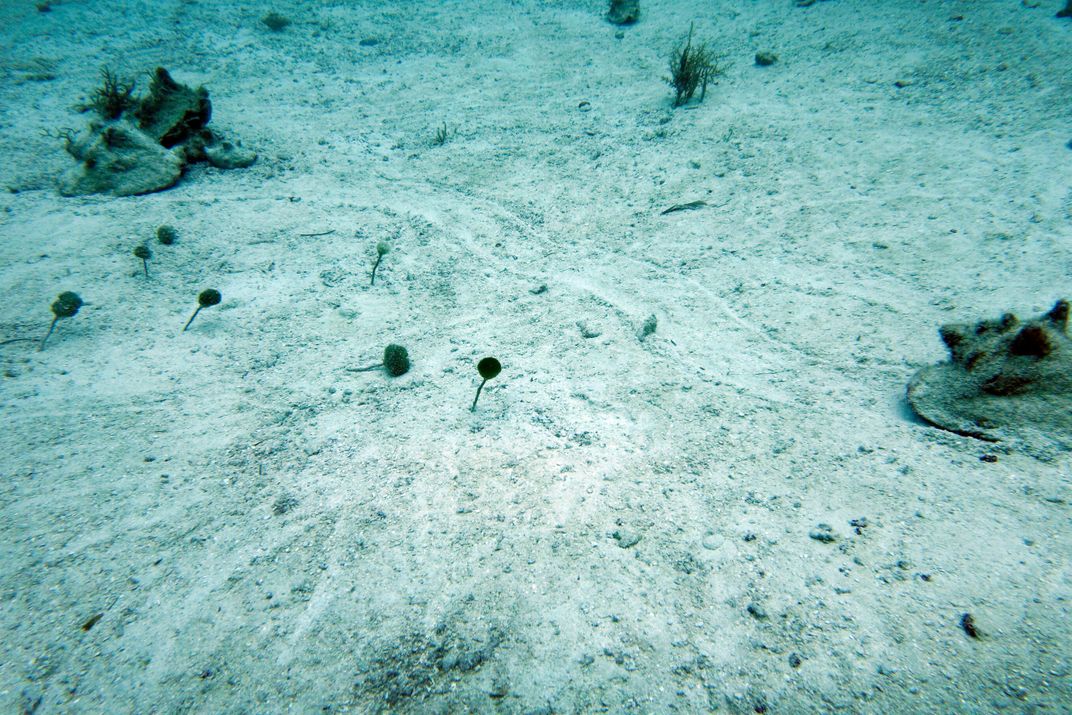
While MarineGEO is committed to employing state-of-the-art methods to approach some of these observations, one of its strengths as a global biodiversity network is the use of very simple experiments, which can be deployed on a large scale using basic materials with minimal training. This immediately opens the door for participation by other research stations and academic institutions, as well as citizen scientists and school groups.
For this study we are deploying a tried and true workhorse of the MarineGEO toolbox, a simple bait stick, (recently published in PLOS-ONE) that has come to be known as the Squidpop, or squid lollipop.
It consists of a thin fiberglass rod about 18 inches tall with a small slice of squid tissue—about the size of a standard paper-hole punch—affixed at one end. We track how much squid is consumed by local fish over a standardized period of time and compare this information to what is known about the fish community through net traps and visual surveys, or cameras that are recording the predation.
In an attempt to capture data over larger regions, MarineGEO is planning to implement a squidpop blitz called Ocean Bitemap for the upcoming World Oceans Day on June 8, 2016.
The goal is to deploy squidpops in as many regions and habitat types as possible.
MarineGEO and others partners including members of the global seagrass network Zostera Experimental Network (ZEN), will deploy squidpops worldwide. This will be the first of its kind in terms of coordinated observations of predation in coastal environments. Throughout the summer, all partners will repeat these deployments, which will provide a clearer snapshot of predation data than we have ever had. You can find more information about squidpops and Ocean Bitemap online, including instructions on how to deploy your own squidpop.
Comparing these squidpop surveys with habitat data and conservation status information will provide valuable clues as to what characteristics allow marine habitats to function properly, particularly in the face of continued disruption by human activities.
My colleague, Ross Whippo, central technician and field biologist for MarineGEO, reaches the bottom just moments after I do and quickly sets down his equipment, including a bundle of squidpops, in preparation for deployment. First, however, he plants a video camera mounted on a PVC pipe into the sand.
Even though the squidpop test targets primarily predatory fish, there are plenty of other types of fish inhabiting the area.
A large remora circles us as Ross sets up the camera. These fascinating fish have a flat oval sucking disk on top of their head that allows them to attach to other animals. They are commonly seen adhered to sharks, though earlier at the same site a sea turtle was photographed with a few remoras hanging on. I have had them cling to my fins and my scuba tank multiple times and consider them great fun.
They are mostly harmless but Ross doesn’t like this one hanging around, since it appears to be looking for a good place to attach. The ease with which the squidpops are deployed becomes apparent as we swim away from the camera (and the remora) and begin planting them in the sand approximately six feet apart. Once all 25 are planted in a row, we have time to kill.
Our task now is to leave the study site for an hour to allow predation to occur.
At the top of the food chain, predators have an important role controlling the ecosystem. They are the primary culling agent, determining the number and types of organisms that live in a particular area. A high abundance of voracious predators might result in a different group of animals than in zones that are relatively predator free. This can change depending on the time of year, the type of habitat and the human impact on the study site.
At the top of the food chain, predators have an important role controlling the ecosystem. They are the primary culling agent, determining the number and types of organisms that live in a particular area. A high abundance of voracious predators might result in a different group of animals than in zones that are relatively predator free. This can change depending on the time of year, the type of habitat and the human impact on the study site.
In healthy coral reef systems, we often see numerous large predators as well as other smaller omnivorous fish. But in sandy habitats, like the one we’re visiting, we expect fewer predatory fish. The number of squidpops consumed helps confirm if our predictions are correct. From this data, we can determine how important predators might be in a particular habitat over time.
MarineGEO currently has partners up and down the coasts of North and South America and into the Pacific, including Smithsonian Stations in Maryland, Florida, Belize and Panama, The University of Hawaii at Manoa, Romburg-Tiburon Center in San Francisco Bay, and the Hakai Institute in British Columbia, with plans to expand to universities in Tasmania, Hong Kong, and Singapore.
Each of these places presents a new opportunity to collect coordinated data on predation pressure using squidpops, as well as the ability to network locally, reaching out to the community for active participation. MarineGEO has guided many groups on the deployment of squidpops—from the Three Seas program, an education program that trains the next generation of marine scientists, to a middle school student who won his school's science fair by using squidpops to compare predation pressure across local marine habitats.
While waiting for the hour to pass, we swim around the edges of the site taking notes. It's then that I see what is making the tracks in the sand: conch. These comical looking mollusks are common to the Caribbean. Their eyes poke out on stalks from inside large, pink, beautiful shells, and they move along one “step” at a time, with a lift and a flop, leaving tracks behind in the sand. With such awkward and slow movements, I'm amazed by how far they travel.
It becomes clear that this moonscape is, in fact, teeming with life.
While the bulk of marine biodiversity in this region is constrained to the coral reefs, the region’s various habitats are connected. Reefs, sand patches, seagrass meadows and mangrove forests host overlapping communities of fish and invertebrates that move from one habitat to the next, depending on factors like seasonality, day-night cycles, feeding and breeding, and life stages.
We often see many more juvenile reef fishes of certain species in and amongst the protection provided by the roots of the mangrove forests than we do elsewhere. Here on the sandy bottom we see damselfish, grunts and gobies that will be counted by the visual fish survey that other members of the MarineGEO team will conduct with researchers from the University of Tasmania on a project called Reef Life Survey, which is tracking fish biodiversity on a global scale.
This is the main reason to put squidpops in different habitat types. Each habitat may well have its own patterns of predation that can vary between, for example, a sand patch and a seagrass meadow, which may actually be quite close geographically.
After an hour has passed, we swim back to our study site and count how many squidpops have been consumed. Ross swims along the line of squidpops, marking down the data on a dive slate. I follow behind and count five pieces of squid missing out of 25. Not bad for a spot that looked like nothing more than a deserted moonscape on first glance, but still nowhere near as active as the local reefs where we regularly see removal of all 25 pieces of squid in a single hour. Sometimes they disappear before we finish putting them all out.
This experiment isn't over yet. We leave the squidpops behind to retrieve the following day, to account for nighttime feeding by predatory species. We will repeat this same task time and time again over the week with both squidpops and plantpops as well.
Plantpops are one of the tests that MarineGEO is developing to compliment the squidpop experiment. Plantpops are ropes with different types of aquatic plants threaded into its strands. While squidpops address predation, plantpops will address herbivory, or the consumption of plants by animals. Animals eating plants is the main link between plant photosynthesis and higher levels of the food web. By determining the rate at which aquatic plants are consumed, we learn about the health and functioning of an ecosystem. Similar to the squidpops, we plan to repeat these experiments over a long period of time at sites around the world. This data will help us document consumption rates and aquatic plant preferences in each habitat globally and allow us to determine changes in habitat health.
Collecting the data is only the start of the challenge. Bringing it all together so a coherent map of predation is the next step for the MarineGEO team.
One of MarineGEO's other primary objectives is to make all the data collected freely accessible. The results of all squidpop collections will eventually be available online as well as a whole suite of other data including water conditions and biological data from all MarineGEO participant sites.
As Ross and I return to collect the camera, our remora reappears and follows us for a while. By tracking all diversity at a given site, including species like our friend the remora, it places the data from squidpops in context. Habitats are more than just predators, so noting who is there and when, provides a more holistic view of the environment and how it will respond to the accelerating change which is occurring in the coastal regions of our oceans. Fittingly, before I ascend and leave behind my now familiar moonscape, I notice a parting reminder of marine biodiversity—an egg sack of a moon snail at rest on the sandy bottom.
Hopefully by deploying squidpops, we will collect enough data to lead us towards an answer to a much larger question, how will the next generation be able to cope with the future conditions of our coastal oceans?
/https://tf-cmsv2-smithsonianmag-media.s3.amazonaws.com/accounts/headshot/Laurieselfie_DSC0835.jpg)
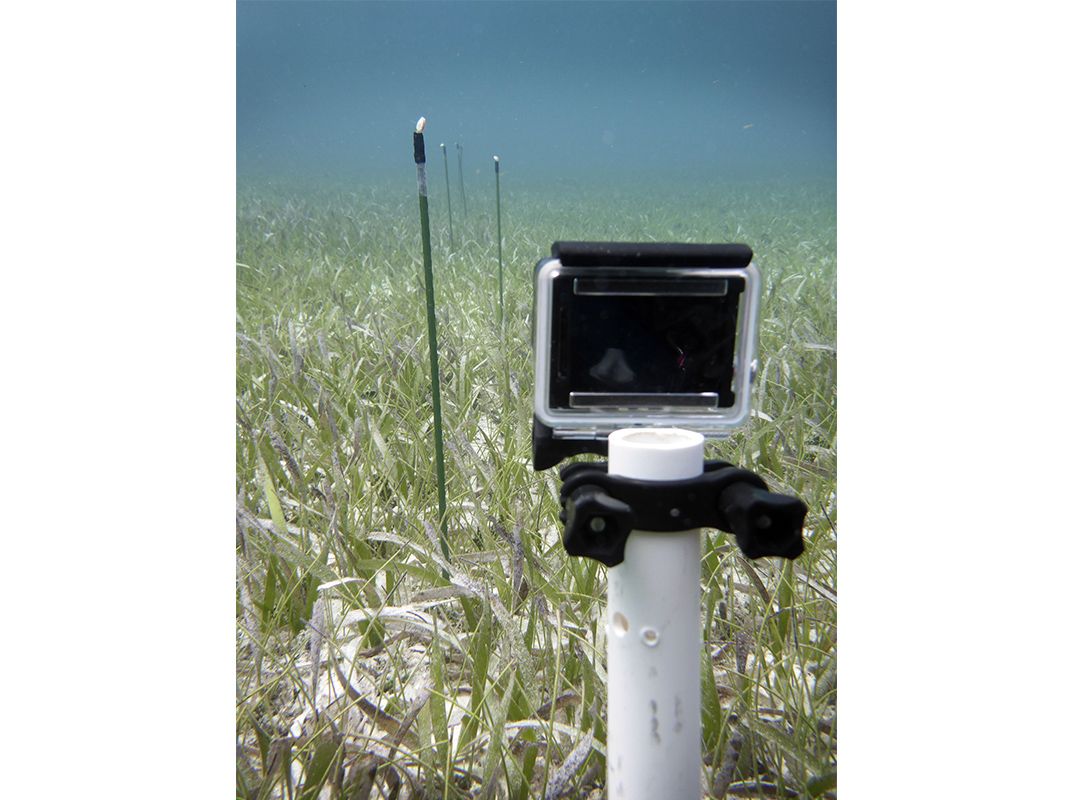
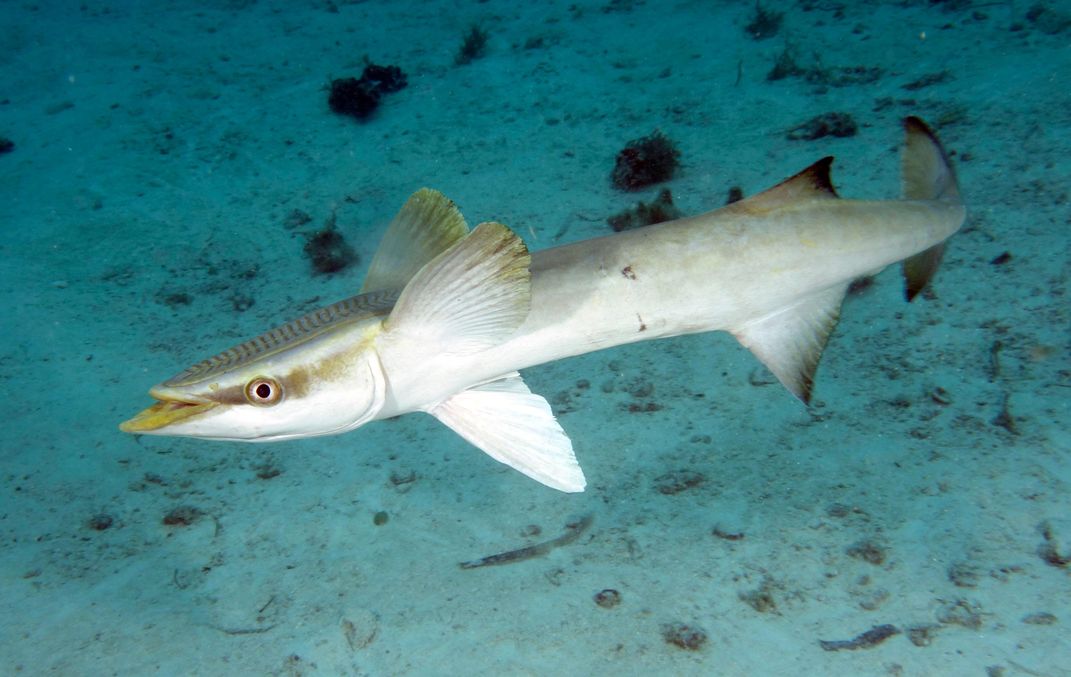
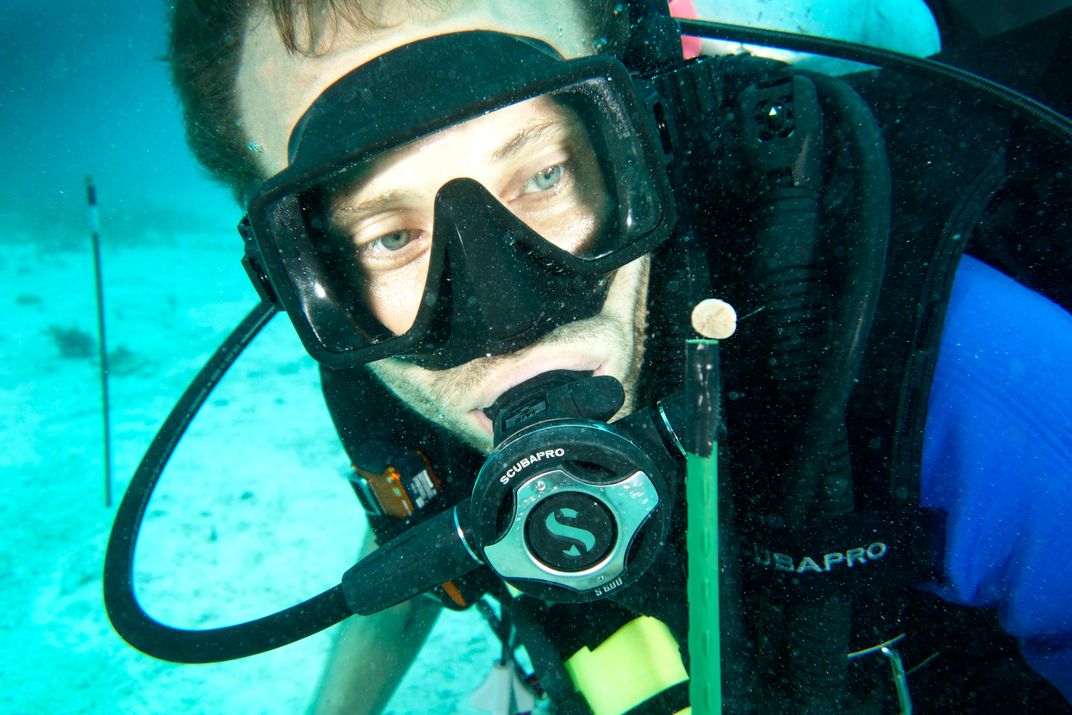
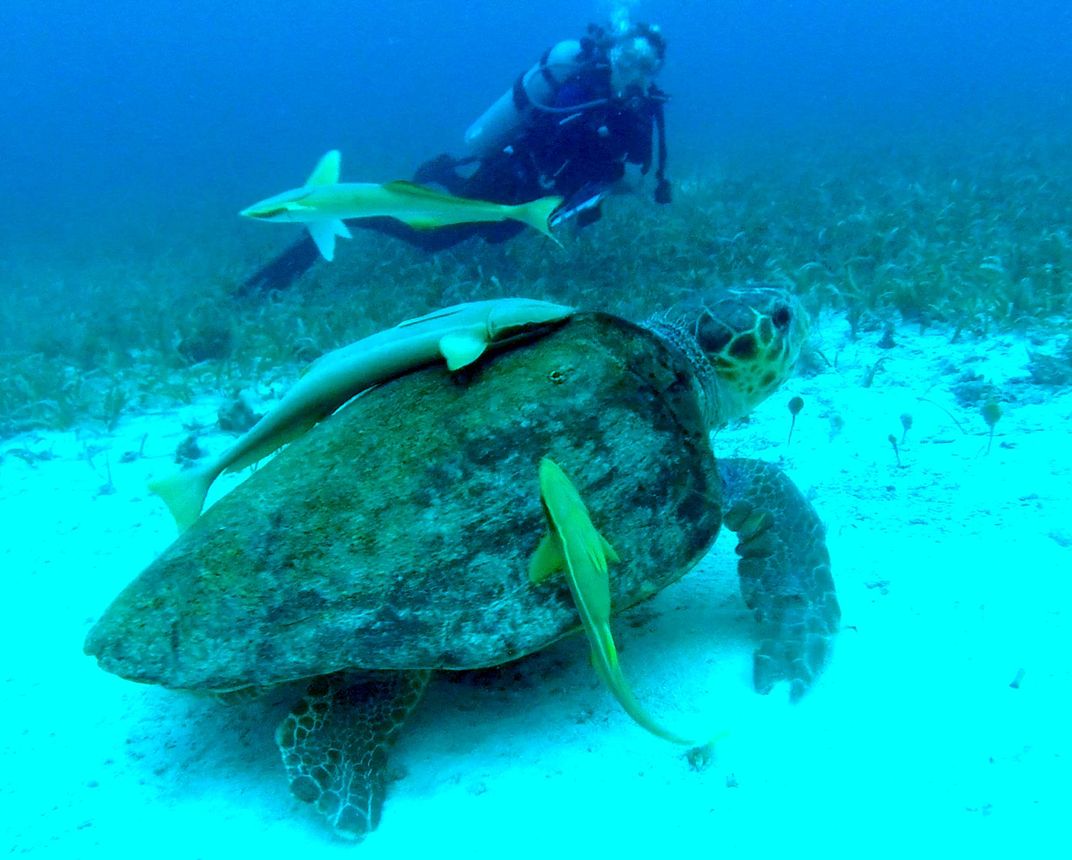



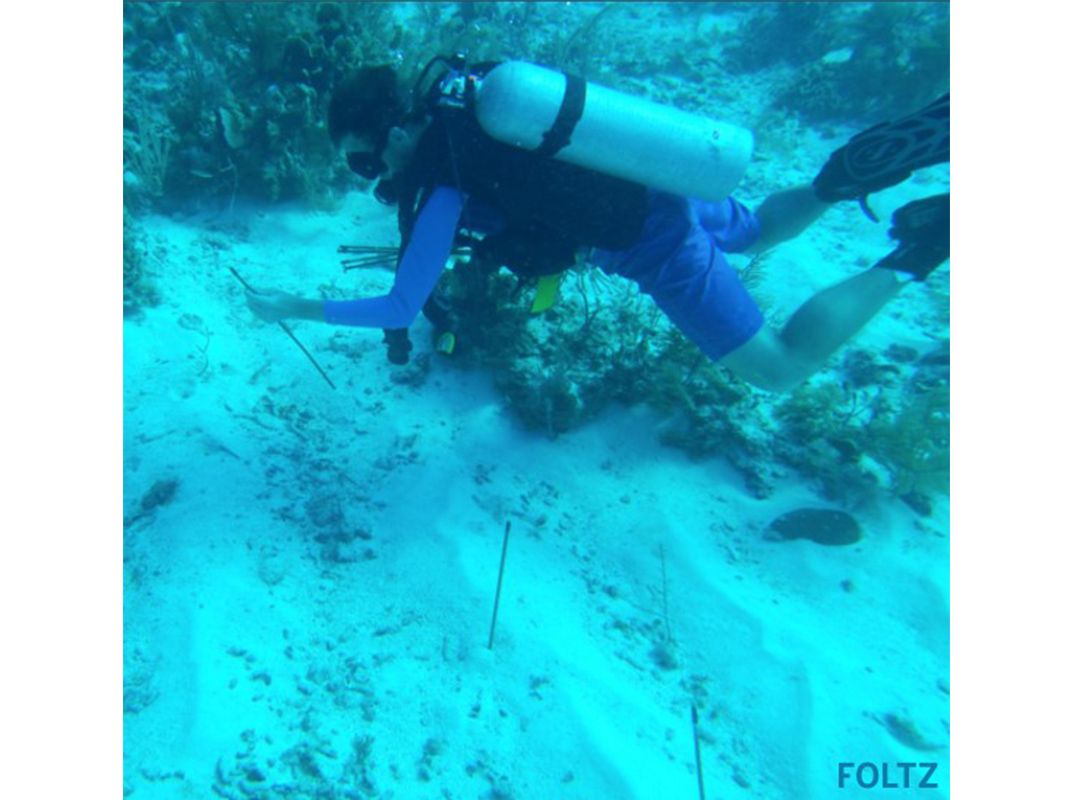
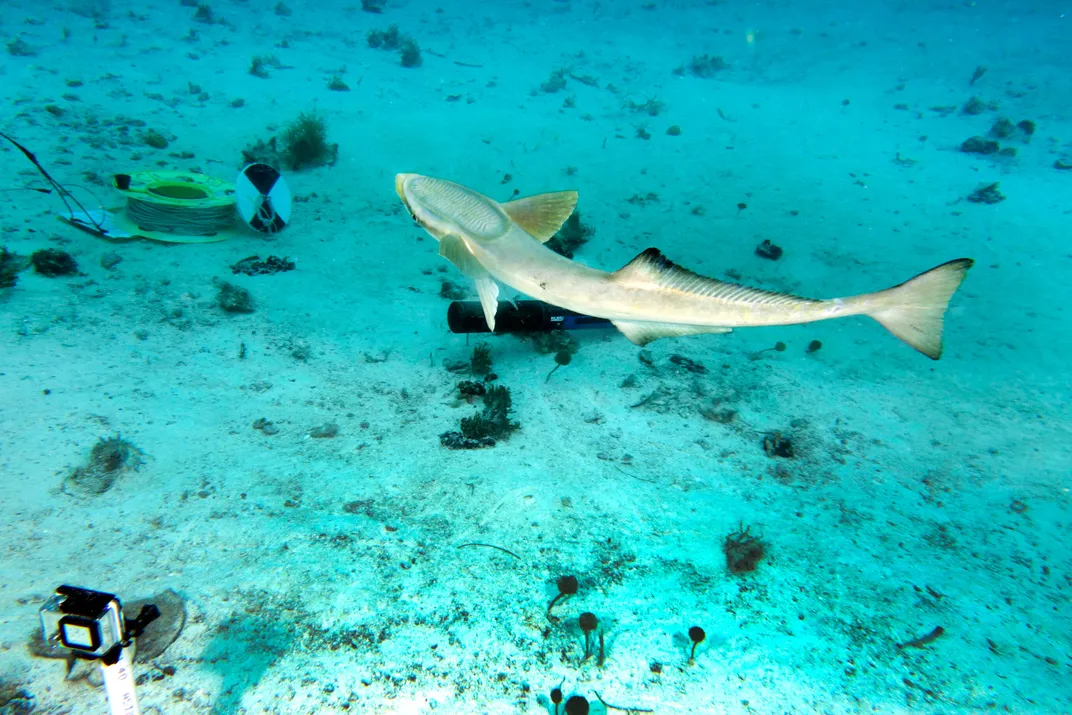
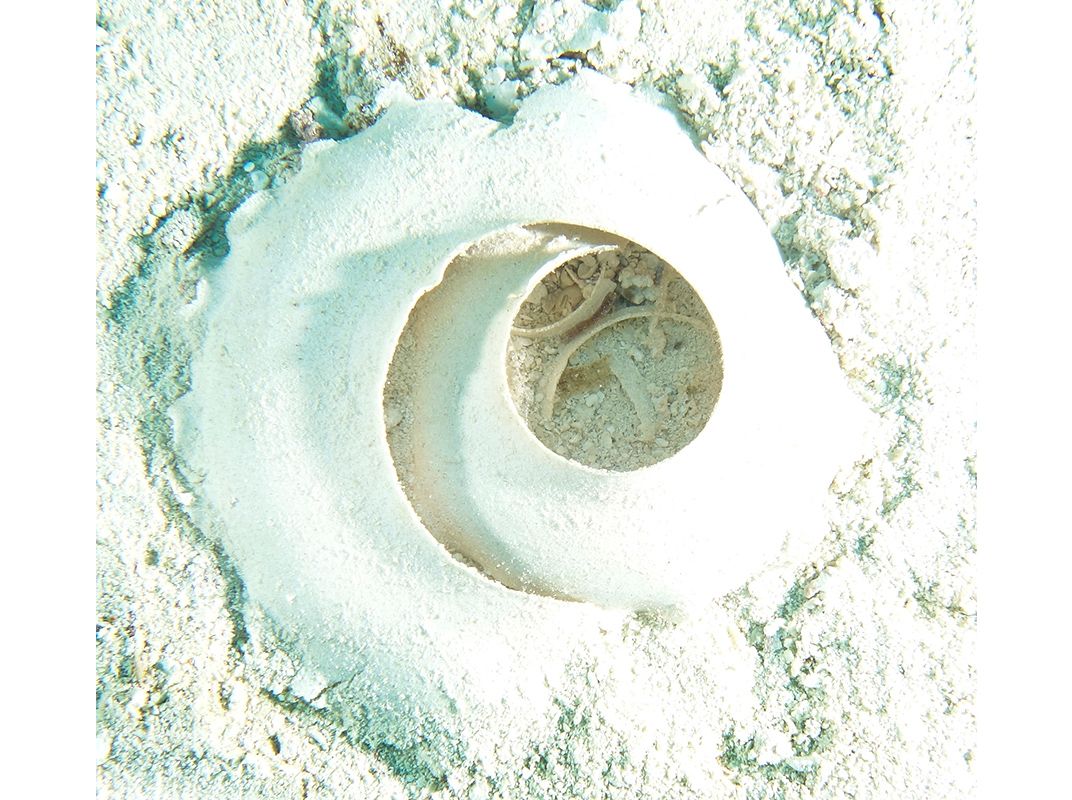
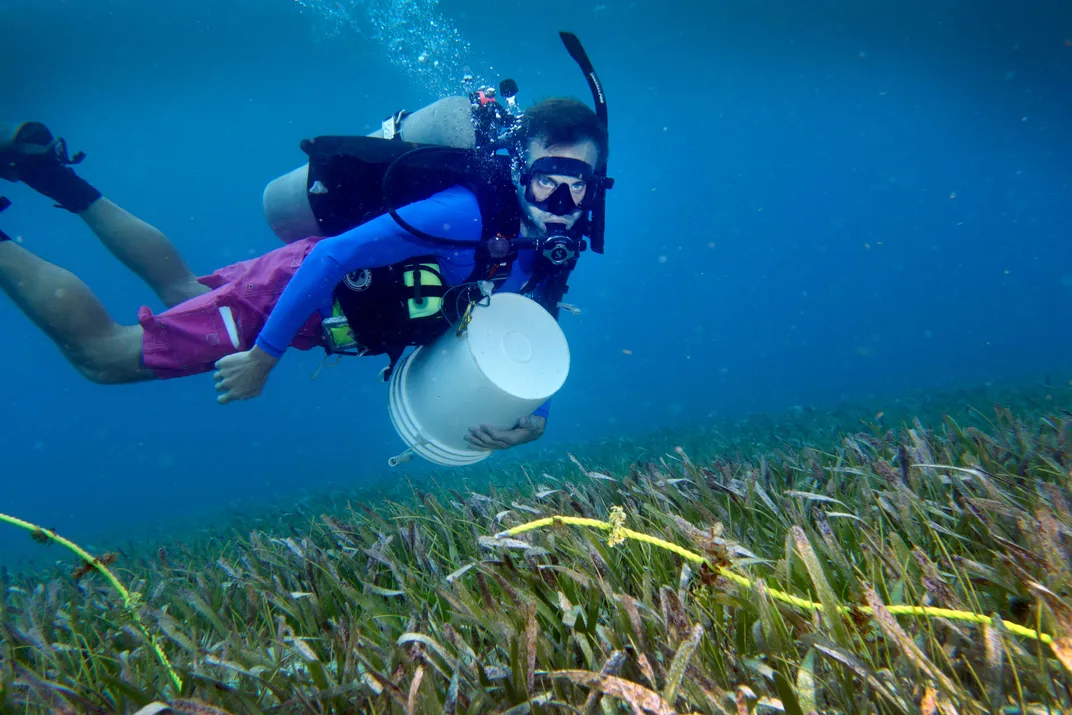
/https://tf-cmsv2-smithsonianmag-media.s3.amazonaws.com/accounts/headshot/Laurieselfie_DSC0835.jpg)